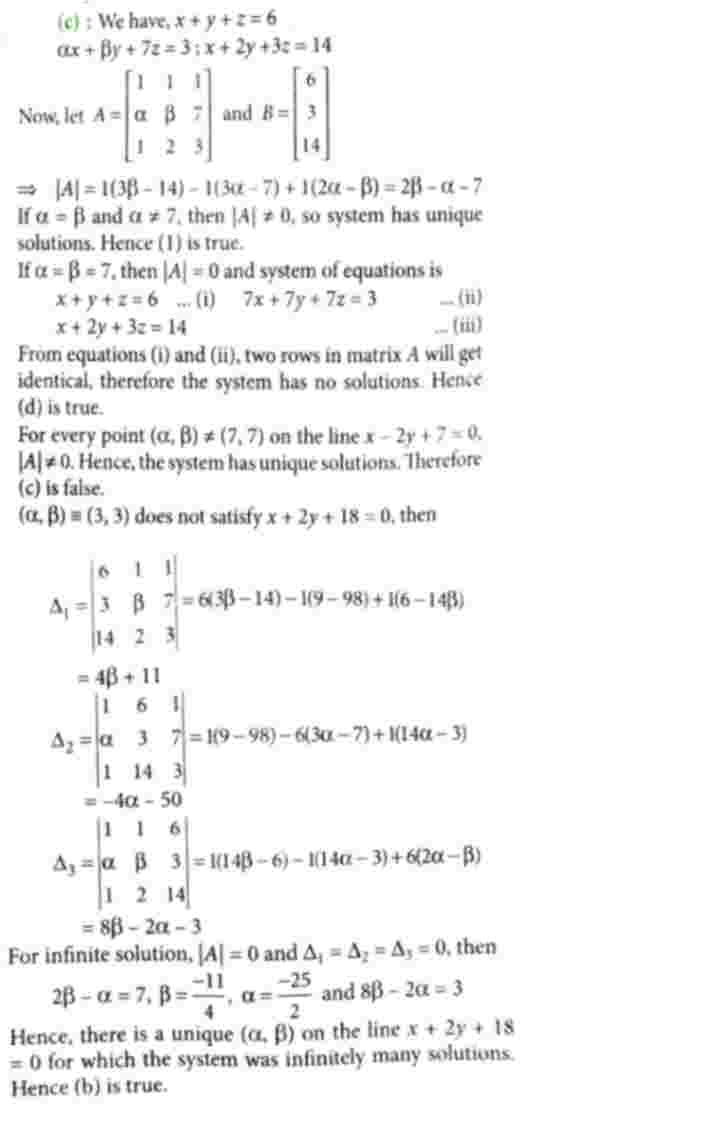For the system of linear equations which of the following is NOT true
(a) If and then the system has a unique solution
(b) There is a unique point on the line for which the system has infinitely many solutions
(c) For every point on the line the system has infinitely many solutions
(d) If then the system has no solution
